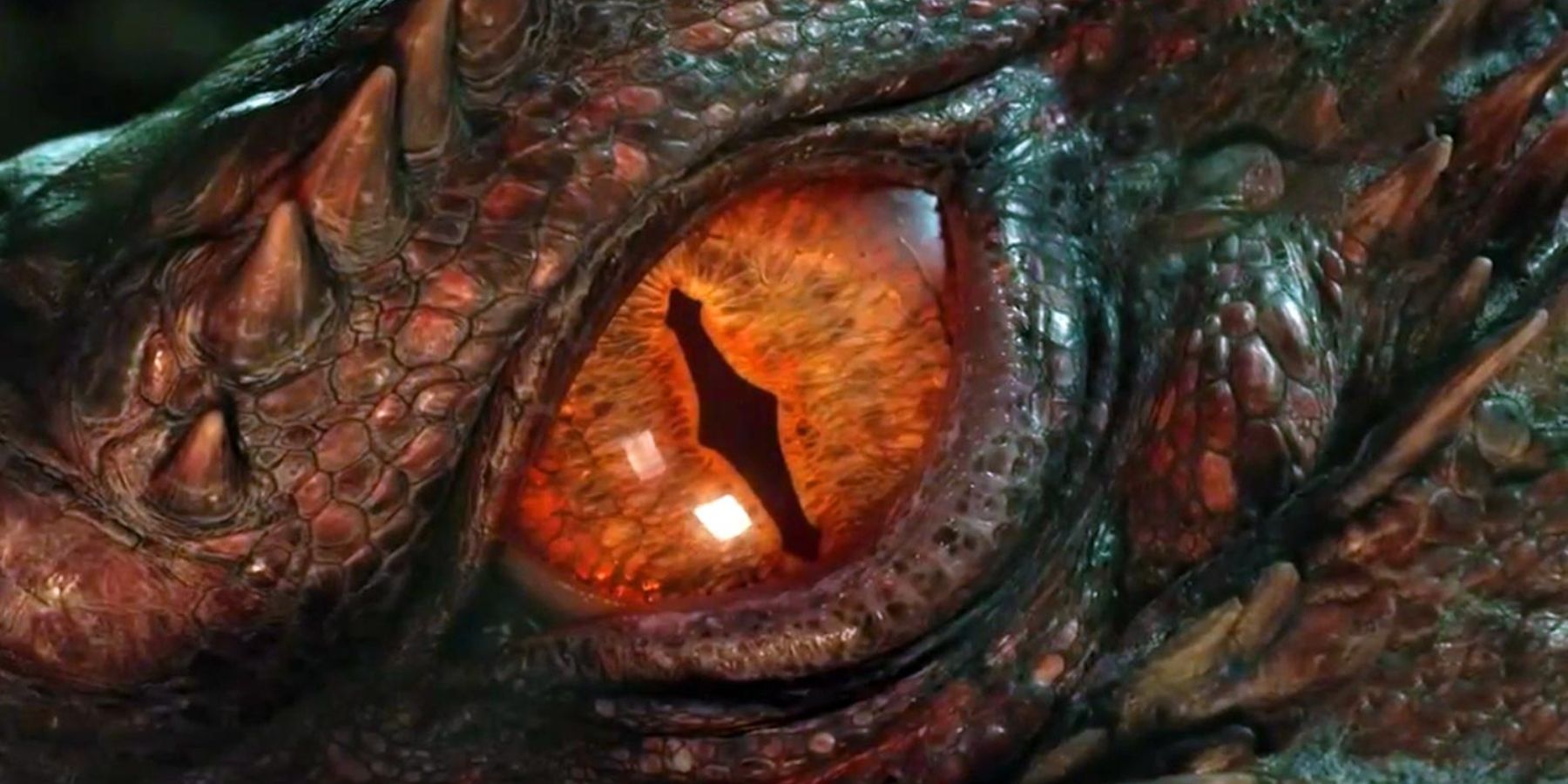
The Elusive Mystery of Smaug the Dragon: Unearth the Enigma

Smaug, the iconic dragon from Tolkien's world, instills fear like no other Explore his captivating description, contrasting movie adaptations, his dragon classification, and the intriguing question of whether he is the last of his kind in Middle Earth
Before the events of The Hobbit, Morgoth, the first Dark Lord, bred dragons in the First Age to fight for him in battles. The first dragon seen in Middle-earth was Glaurung, known as the father of dragons. Many dragons were slain during the War of Wrath in the First Age, and those who survived migrated to the far north, where their population gradually grew. In the Second and Third Age, dragons started invading lands in search of gold, with Smaug the Golden being one of them.
Smaug, the most powerful fire-breathing dragon of the Third Age, is fierce and formidable. Gandalf becomes concerned at one point that Smaug's innate violence could make him a potential ally of the Dark Lord Sauron. Even in death, the vast number of precious gemstones lying with Smaug's body remain untouched, showcasing the terror he instilled.
How Is Smaug Described in the Books?
Smaug, the infamous dragon, made his first appearance in Middle-earth's history in 2770 of the Third Age. He attacked the Lonely Mountain and the town of Dale, driven by the rumors of the Dwarves' wealth in Erebor. Smaug's greed and wickedness forced the Dwarves into exile and allowed him to claim the treasure, including the renowned Arkenstone, for himself. Known for his insatiable desire to guard his hoard of gold, Smaug's cunning and cruelty are evident when he immediately notices the theft of a single cup by Bilbo Baggins. He takes pleasure in boasting about his invulnerability and attempts to manipulate Bilbo by sowing doubt about Thorin Oakenshield's intentions. J. R. R. Tolkien vividly describes Smaug as a red-golden dragon with bat-like wings, razor-sharp teeth and claws, and an immense tail. His flames are a mesmerizing combination of scarlet and green, and he emits a reddish glow in the darkness. Although Smaug is the largest creature of the Third Age, his ancestors, such as Ancalagon the Black, were believed to be even more colossal and powerful dragons in Middle-earth.
His upper hide is covered with scales that are considered impenetrable to most weapons, providing him with a formidable defense. However, to safeguard his vulnerable underbelly, he spends nearly two centuries reclining on his hoard of treasure, allowing the gems to embed themselves into his body. In the year T.A. 2941, a group of dwarves make an attempt to reclaim their kingdom and it is Bilbo who first encounters Smaug. Unbeknownst to the dragon, the Hobbit notices a patch on his "diamond waistcoat" where the scales are absent. Realizing that the Lake-men must have aided the intruders, Smaug departs from the Lonely Mountain with the intention of annihilating Lake-town. It is at this moment that Bard the Bowman takes aim and shoots the Black Arrow directly into the exposed spot in the dragon's armor.
How Does Smaug’s Appearance Differ in the Movies?
Only glimpses of Smaug can be seen in The Hobbit: An Unexpected Journey, but his appearance undergoes a notable transformation in its sequels. In the book, he is described as a "wyrm" with four legs, but visual effects artist Joe Letteri takes inspiration from dragons across different cultures to create Smaug's new look. He skillfully combines elements of the classic European dragon with the legendary Asian dragon.
Voiced by Benedict Cumberbatch, Smaug possesses a lengthy, serpentine neck; a face reminiscent of a crocodile; a row of spikes adorning his back; a lengthy tail; and dull-golden scales on his belly, while the rest of his body is covered in red scales. In the film adaptations, he is depicted as considerably aged, bearing scars, decaying skin, and discolored scales, which serve as visual evidence of his past battles. Furthermore, his size is magnified, measuring approximately 130 meters in length and towering at a height of 18.3 meters.
The most significant departure from the book's depiction is that the film trilogy presents Smaug with heavily armored undersides, as opposed to being adorned with gold and jewels. The exposed area on his belly is actually a scale that was lost during his devastating attack on Dale, when Girion, the Lord of Dale, attempted to slay him.
What Kind of Dragon Is Smaug?
In the intricate world of Middle-earth created by Tolkien, a variety of dragons have inhabited the realm over the course of history, each distinguished by their manner of movement and ability to breathe fire. These diverse dragon types encompass winged dragons, characterized by their possession of four legs and wings; wingless dragons, known for crawling on their legs; serpent-like dragons, which lack both legs and wings; cold-drakes, unable to emit fire; and fire-drakes, encompassing both winged and wingless dragons capable of breathing fire. Among them, Smaug stands as a fire-drake equipped with wings that enable him to take flight.
Is Smaug the Last Dragon in Middle Earth?
After the death of Smaug, it is commonly believed that dragons became nearly extinct. Gandalf suggests that fire-drakes persisted until just before the War of the Ring, and it is possible that a few subspecies managed to survive beyond that time. Additionally, there is a chance that certain types of dragons persisted into the Fourth Age. In a letter, Tolkien affirmed that Smaug is the final great dragon of Middle-earth and that, although there may still be dragons, none of them pose a threat as significant as him.

















